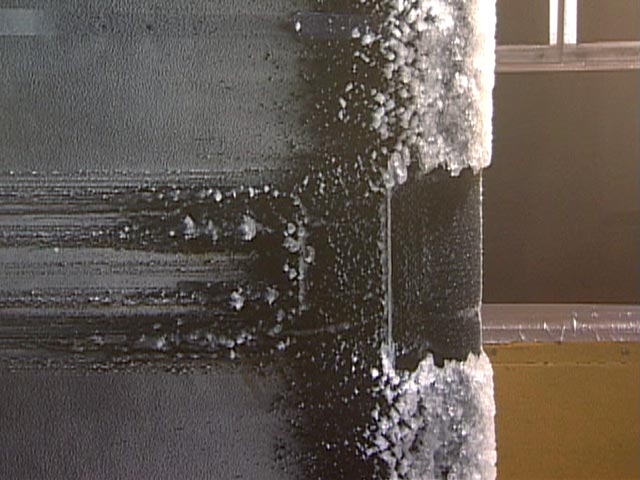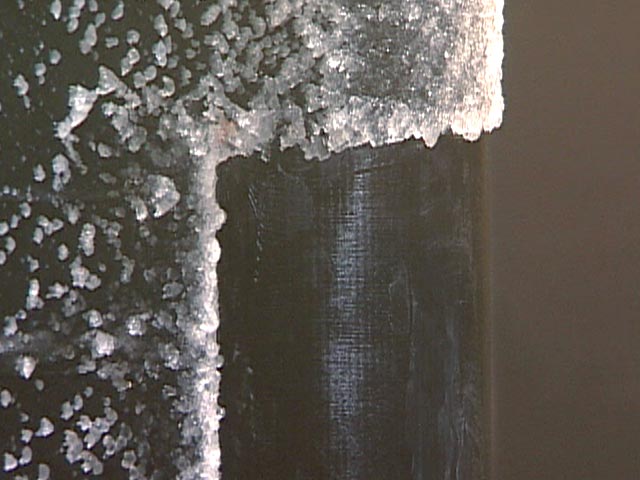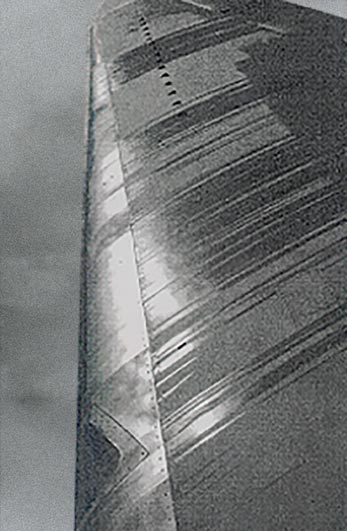A Pilot's Guide to Inflight Icing
Module I - Before You Fly
Aircraft Design for Icing
Section: Anti-Icing Systems
Start This SectionAnti-Icing Systems Aircraft Design for Icing
Anti-icing systems are designed for activation before the aircraft enters icing conditions to prevent the formation of ice.
Most anti-ice systems rely on heat to evaporate the liquid water when it strikes the protected surface. In turbine-powered aircraft, engine bleed air is commonly used to supply the required heat. Piston powered aircraft normally rely on electrical power to supply the heat. Some aircraft use a combination of both methods.

Anti-icing systems are designed for activation before the aircraft enters icing conditions
Anti-Icing Systems Aircraft Design for Icing
If there is insufficient heat, the water droplets that strike the airfoil will not evaporate. If this happens, the water will run back until it reaches the unheated portion of the airfoil and then freeze. This phenomenon is called "runback icing."
Aircraft that use bleed air usually have warning systems to inform the pilot if the available heat is insufficient. This sometimes occurs when engine power is retarded for descent or holding, thereby reducing the volume and/or temperature of the bleed air.
Thermal Ice Protection System Test with flight hardware in the NASA Icing Research Tunnel (IRT)
Anti-Icing Systems Aircraft Design for Icing
Pilot Action Recommendation
IF: A ridge of ice forms aft of the protected areas
ACTION: Exit the icing environment immediately and fly to an area or altitude where the runback ice can sublimate or melt.
CUES: Water running aft of the protected area and freezing; a ridge of ice aft of the protected region.
WHY: Once ice forms aft of the protected areas, the ice protection system cannot remove it.

Runback ice

Runback ridge
Anti-Icing Systems Aircraft Design for Icing
Although less common, freezing point depressant fluid systems have also been used for anti-icing. These systems "weep" specially formulated fluids (usually based on glycol) from the leading edges of the airfoils. The anti-icing fluid runs back over the protected surface. The fluid prevents ice from forming because the freezing point of the water/anti-icing fluid mixture is lower than that of unadulterated liquid water. Similar fluid systems may be used to prevent ice accretion on propeller blades and windshields.

Weeping wing system